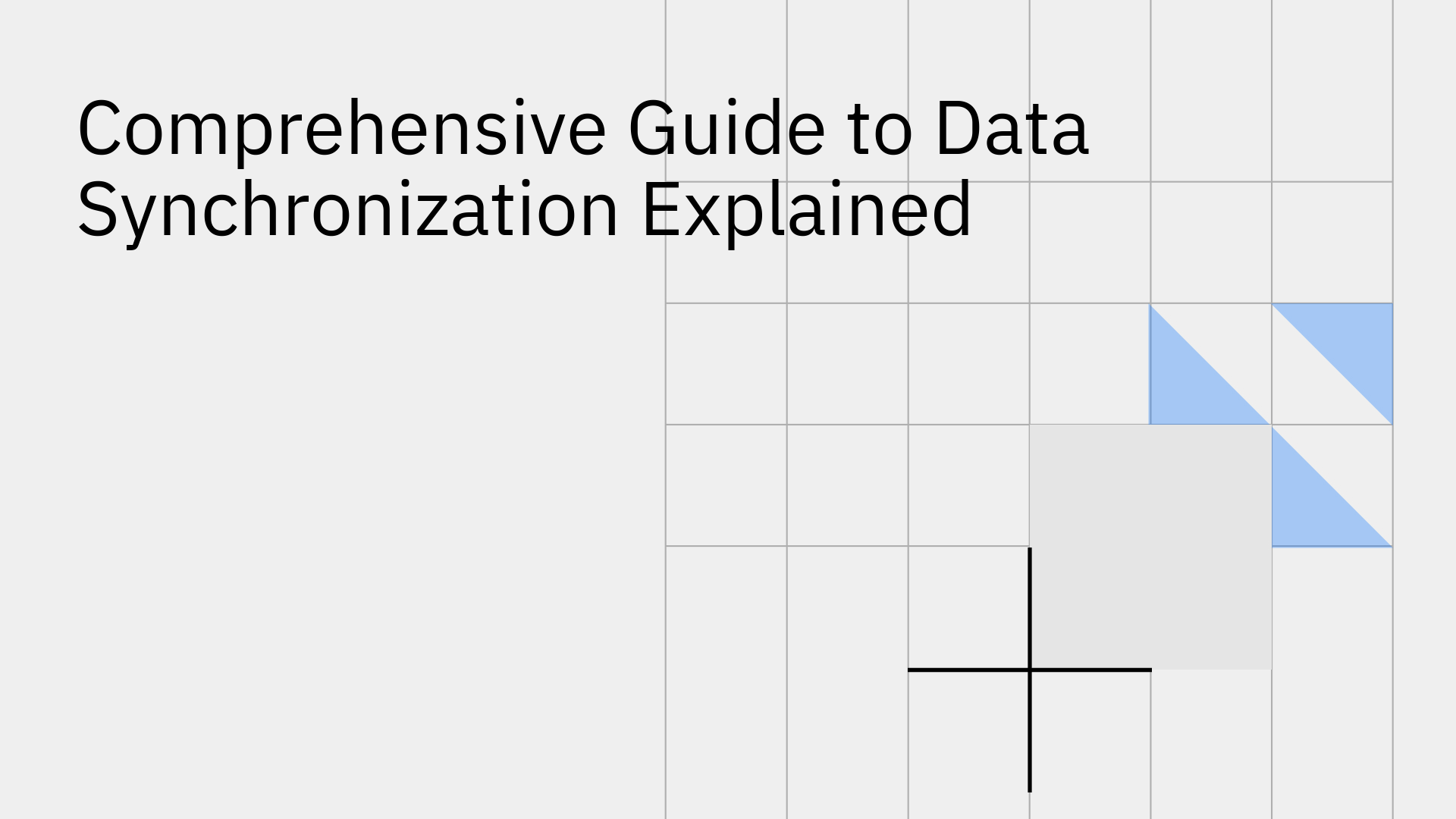
In modern enterprises, critical data is distributed across a multitude of operational systems. Marketers analyze leads in marketing automation platforms, sales teams manage opportunities in CRMs, finance processes orders in ERPs, and IT handles incidents in ITSM tools. While this specialization is necessary, it creates a significant technical challenge: ensuring data consistency across these disparate systems.
Manual data entry and reconciliation processes are inefficient and prone to human error, leading to data discrepancies. This inconsistent data results in operational friction, misinformed business decisions, and inaccurate reporting. The consequences are substantial, with poor data quality costing organizations significant amounts annually.
Data synchronization provides a direct solution to this problem. It is the process of establishing and maintaining data consistency across multiple applications and databases, ensuring that all stakeholders are working from a single, reliable source of truth. This guide provides a comprehensive technical explanation of data synchronization, its types, benefits, challenges, and implementation methods.
Data synchronization is the continuous process of reconciling data between two or more systems, ensuring that the data remains identical and up-to-date. According to Gartner, it involves establishing consistency among data from a source to a target and maintaining that consistency over time [1]. This process can be executed in real-time, near-real-time, or in scheduled batches, depending on the operational requirements.
With the global volume of data projected to exceed 180 zettabytes by 2025, the need for efficient and scalable database synchronization technologies has become a critical enterprise priority [2].
A synchronization process can be architected in one of two primary models:
A one-way synchronization, also known as unidirectional sync, involves propagating data changes from a designated source system to one or more target systems. Changes in the target systems are not reflected back to the source.
For example, consider an HRIS as the source system for employee data. When a new employee is hired or an existing employee's details are updated in the HRIS, a one-way sync would automatically update the corresponding records in downstream systems like a CRM or an ITSM platform. However, any changes made to the employee record within the CRM would not impact the master record in the HRIS.
A two-way or bi-directional sync establishes a reciprocal relationship where data changes in any connected system are propagated to all other connected systems. In this model, there is no single master; each system can act as both a source and a target.
Continuing the previous example, a bi-directional sync between a CRM and an ITSM tool means that an update to a customer record in the CRM would update the corresponding record in the ITSM tool, and conversely, an update to an incident status in the ITSM tool could update a case record in the CRM. This model is powerful for collaborative workflows but introduces significant technical complexity, particularly around conflict resolution.
Data synchronization is fundamental to a wide range of business operations. Here are a few technical examples:
Implementing a robust data synchronization strategy delivers significant technical and operational benefits:
While the benefits are clear, implementing reliable data synchronization presents several technical hurdles:
Organizations have several options for implementing data synchronization, each with distinct trade-offs.
While generic iPaaS platforms are suitable for simple, trigger-based automations, they often fall short when faced with the complexities of high-volume, bi-directional database synchronization. They are not architected to handle the nuanced requirements of conflict resolution, schema evolution, and guaranteed data consistency that are critical for operational systems.
This is where a purpose-built platform like Stacksync excels. Stacksync is engineered specifically to solve the hardest problems of data synchronization. It provides true, reliable bi-directional sync with automated conflict resolution and robust error handling, ensuring data is always consistent. Its no-code interface allows technical and non-technical teams to build and manage complex syncs without writing a single line of code, freeing up valuable engineering resources. With enterprise-ready security and effortless scalability, Stacksync empowers organizations to build a reliable, unified data foundation.
In distributed architectures, data synchronization is essential for maintaining consistency across multiple nodes, databases, and microservices. Achieving this requires sophisticated techniques to overcome challenges like network latency and concurrency conflicts [4].
Platforms like Stacksync abstract this complexity away, providing a managed, reliable synchronization layer that incorporates these best practices out of the box.
In today's data-driven environment, ensuring seamless data synchronization across operational systems is no longer a luxury—it is a technical necessity. Inefficient, unreliable data flows create data silos, compromise security, and lead to poor decision-making. Traditional approaches like custom coding or generic iPaaS tools are not equipped to handle the complexity and scale of modern enterprise needs.
Stacksync provides a purpose-built, enterprise-grade platform designed to deliver guaranteed data consistency. By offering reliable, real-time, and truly bi-directional synchronization, Stacksync eliminates the technical challenges of data integrity, scalability, and security. It empowers your teams to build a unified data foundation, enhance departmental collaboration, and drive operational efficiency without the heavy burden on engineering.
Discover how Stacksync can transform your organization's approach to data synchronization and unlock the full potential of your data.